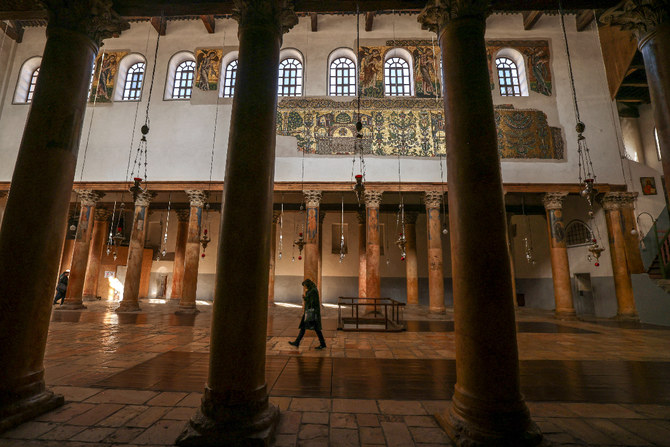
When product designer Ben Watson went to his first ever craft fair in October, he didn’t have great expectations. “I thought it would be akin to a car boot sale, with retirement-age couples having a nose around to fill their Sunday,” he says.
Watson is part of Green Grads, a scheme that supports makers using recycled or waste materials. So the University of Northumbria student had already had his elegant lamps made from discarded vape cases displayed at Heal’s furniture store in London and at Grand Designs Live, Birmingham. A stall at the Great Northern Contemporary Craft Fair (GNCCF) at Victoria Baths, Manchester, didn’t seem like a big deal. “Safe to say I was surprised at the huge variety of attendees, most of whom engaged with makers throughout the day, creating a buzzing atmosphere,” he says. “Each stall offered something wholly unique, which made walking the halls of the fair a real journey of discovery, never quite sure what’s around the corner.”
A growing number of people are, like Watson, discovering the joys of going to or selling at craft fairs and makers’ markets. Over that weekend in October, GNCCF 2023 attracted over 4,000 visitors. A 2019 Crafts Council report found that 34% of those who buy craft prefer markets, festivals and pop-ups to galleries or online purchases.
The current craft revival started through TV and the internet – with shows like The Repair Shop and The Great Pottery Throwdown finding new audiences for artisan skills, and platforms such as Etsy opening a new marketplace for crafters – but now it’s also about face-to-face sales and experiences.
And, if it feels like event posters are everywhere at the moment, that’s because this period is vital for the industry: many crafters generate more than 60% of their annual income in the run-up to Christmas.
Nicky Dewar, learning & skills director at the Crafts Council, says that what we consider as craft has widened in recent years and that has brought in a younger , more diverse audience. There has been an increase in shoppers aged under 35 buying craft, increasing from 17% (1.1 million) in 2006 to 32% buyers (9.1 million) in 2020. She says this age bracket also prefer to buy in markets rather than online.
“Places like the Truman Brewery Makers Market in London appeal to younger people,” says Dewar. “There’s something lovely about seeing markets pop up in so many different spaces. They’re important for emerging businesses to try products and see what sells. It’s a big step for traders.”
Sinead Koehler is the founder of Crafty Fox Market which holds events in unorthodox settings. She says there’s been an explosion of specialist markets all over the country.
“We started hosting markets in a Brixton pub in 2010 and we’ve also sold at music festivals including Shambala and We Out Here,” Koehler says. “This year, we’ve worked with a number of cultural institutions, including a recent market in the foyer at the British Library.”
Homeware and clothing company Toast has 20 shops around the country, but the business has also put together a makers market in King’s Cross, London, this Christmas.
“The festive market provides a platform to showcase unique handcrafted gifts and decorations,” says Madeleine Michell, Toast’s social conscience communications manager. “We hope it provides an opportunity to meet and talk directly to makers.”
The democratisation of markets doesn’t find universal approval though. Annie Warburton is CEO of Cockpit Arts, a social enterprise that provides studio space and business advice for 160 creative businesses in London. Cockpit holds open studio events so the public can meet and buy from makers in their workplace.
Warburton says that many craftspeople are wary of markets: “There can be a wide range of authenticity at these events. You could be buying from a novice or a trained artisan – quality can vary.”
Sinead O’Connor has been involved in selling and running markets since 2015. She curates Artisan Markets Cornwall, with events in Truro, St Ives, Tregenna and Wadebridge.
O’Connor confirms there has been an increased interest in craft – the St Ives market is still rammed with visitors long after the summer season – but she cautions against traders selling “dropshipped” goods – items that are sourced rather than made by the vendor at markets. “I find it heartening that a lot of customers ask: ‘is it made by you?’ The feeling I get is that people really want something that can’t be bought from Amazon,” she says.
Dewar thinks this desire for authenticity is in part the legacy of lockdown. “During the pandemic, lots of people did craft and we also really connected with our local communities as the world shut down.” She still feels that bond with community and locality in craft markets.
“If ceramics are inspired by a certain landscape which means something to you and something to the maker, you have a connection. That sort of craft is like the Couple’s Choice dance on Strictly, it tells a story.”
Watson says he was delighted, if somewhat surprised, when he first made a sale at the GNCCF.
“Makers were far more enthusiastic to talk about their process than push a sale. It’s great though – for consumers, it’s never been easier to make mass-manufactured, next-day delivery purchases. It’s heartwarming to see people in this country are prepared to support independent businesses.”












